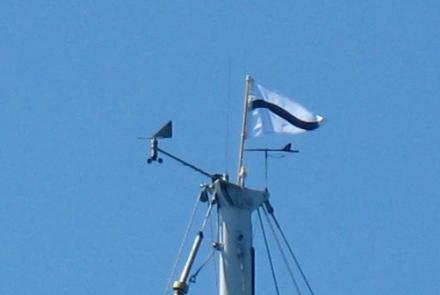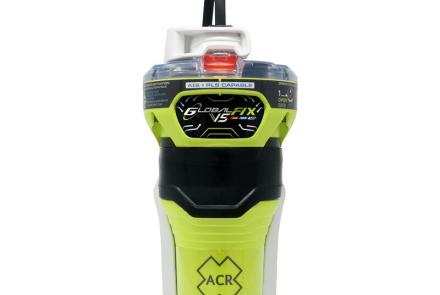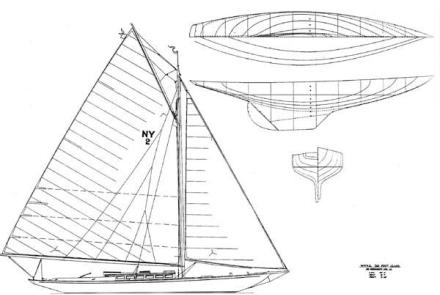Life Jacket Changes Ahead
In the early 1970s, a new method of categorizing life jackets was introduced by the Coast Guard and Underwriter’s Laboratories, using five “types” and a new, strange name for life jackets: the Personal Flotation Device.
The five types fell into recognizable styles: Type I were for commercial use and had the most buoyancy; Type IIs were inexpensive “yoke” style; Type III were vests that were more comfortable, but had relatively low buoyancy; Type IV were “throwable devices” for man overboard; and Type V were anything that didn’t fit into the previous definitions.
These categories served boaters reasonably well until the introduction of inflatable personal flotation devices in the mid-1990s. The Coast Guard and UL attempted to add inflatables to the existing “types” and despite two decades of education, the marriage never made much sense to sailors. This included the requirement that some life jackets had to be worn to be counted in the vessel’s inventory, yet other virtually identical life jackets did not have to be worn. In West Marine’s 2002 Master Catalog, the Coast Guard identified about a dozen errors in how the personal flotation devices were described, and this was after several rounds of proofing by both West Marine and its vendors.
After two years and trying, and close to a half-million dollars in Coast Guard Boating Safety grants, the researchers decided that the current system was so complicated that only a complete overhaul of the PFD classification system...
Due to the confusion caused by the mix of personal flotation devices on the market, a study was made by Applied Safety and Ergonomics in 2004 to analyze how to make the PFD labels more user-friendly so that, theoretically, a person could walk up to a pile of PFDs and figure out if the one that was selected was appropriate for the user. After two years and trying, and close to a half-million dollars in Coast Guard Boating Safety grants, the researchers decided that the current system was so complicated that only a complete overhaul of the PFD classification system would allow for simplified, comprehensible labels.
In the meantime, the rest of the world created ISO 12402 standard for life jackets, and 12401 standard for safety harnesses. The ISO standard provided for four different levels of buoyancy, measured in Newtons, from a swimming aid with 50N (11.2#) of buoyancy to massive inflatables for workers with 275N (62#) of buoyancy. The personal flotation devices offshore sailors use fell in the 150N (33.7#) buoyancy range. To allow ISO devices to be legal in the US, and to allow US-specification devices to be legal in the rest of the world, a harmonization committee was formed around 2006 to try to come up with a world standard, either by adopting the ISO standard in the U.S., or by blending the ISO and U.S. standards. However, the standards had so many differences that a harmonized standard proved to be beyond the reach of the harmonization committee. The effort was shelved.
This brings us to the fall of 2014, when the Coast Guard announced that “types” were being relegated to the dustbins of PFD standards, and that from that point forward, life jackets would either be “wearable” or “throwable”. This was in anticipation of a new PFD standard that would incorporate as much of the ISO standard as possible, including the use of Newtons as a measure of performance. In fact, the committee at Underwriter’s Labs that is responsible for the new North American standard even used the ISO number designation when the created UL 12402.
Like the ISO standard, the new North American standard will use performance levels based on the buoyancy of the device, with Level 50, Level 100, Level 150, and Level 275 designations. Also included will be a Level 70 standard, to account for the millions of old type II and III devices that had 15.5# of buoyancy, or 70 Newtons. So, instead of shopping for a Type I, II, or III, you’ll soon be shopping for a Level 50, 70, 100, or 150 life jacket. Oh, and the good news in all of this is that the term “personal flotation device” is also being retired, at least in the U.S. The more common term, lifejacket, will be how the industry and Coast Guard refers to these devices in the future.
Guidance for buying and using the new lifejackets will be based on five concepts that simplify the message for the 70 million or so Americans who go boating in a given year:
- Wear your lifejacket whenever you’re on the water.
- Make sure everyone’s lifejacket fits properly.
- Don’t take off your lifejacket when you fish or do other on-water activities.
- Wear an appropriate lifejacket for the conditions (rough waters = more buoyancy) and type of boating that you’re doing (especially watersports)
- Read the label and understand how the lifejacket you have is intended to be used.
It remains to be seen whether the new UL standard will allow newer, more desirable designs to come on the market, and whether the boating public will be able to understand lifejacket selection without Coast Guard “types”. Ideally, the combination of more desirable lifejackets and better education will help decrease the number of deaths due to drowning in the U.S.






